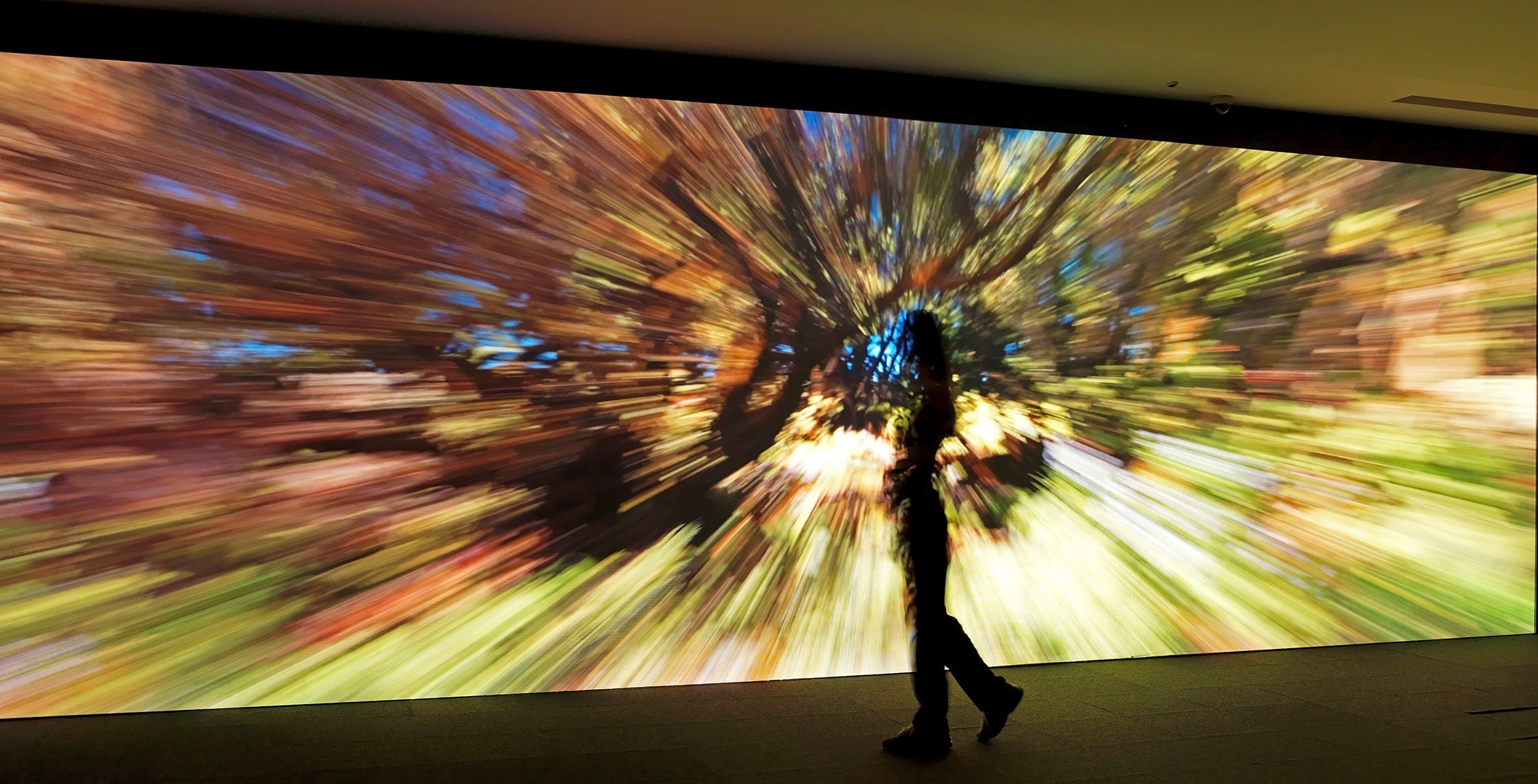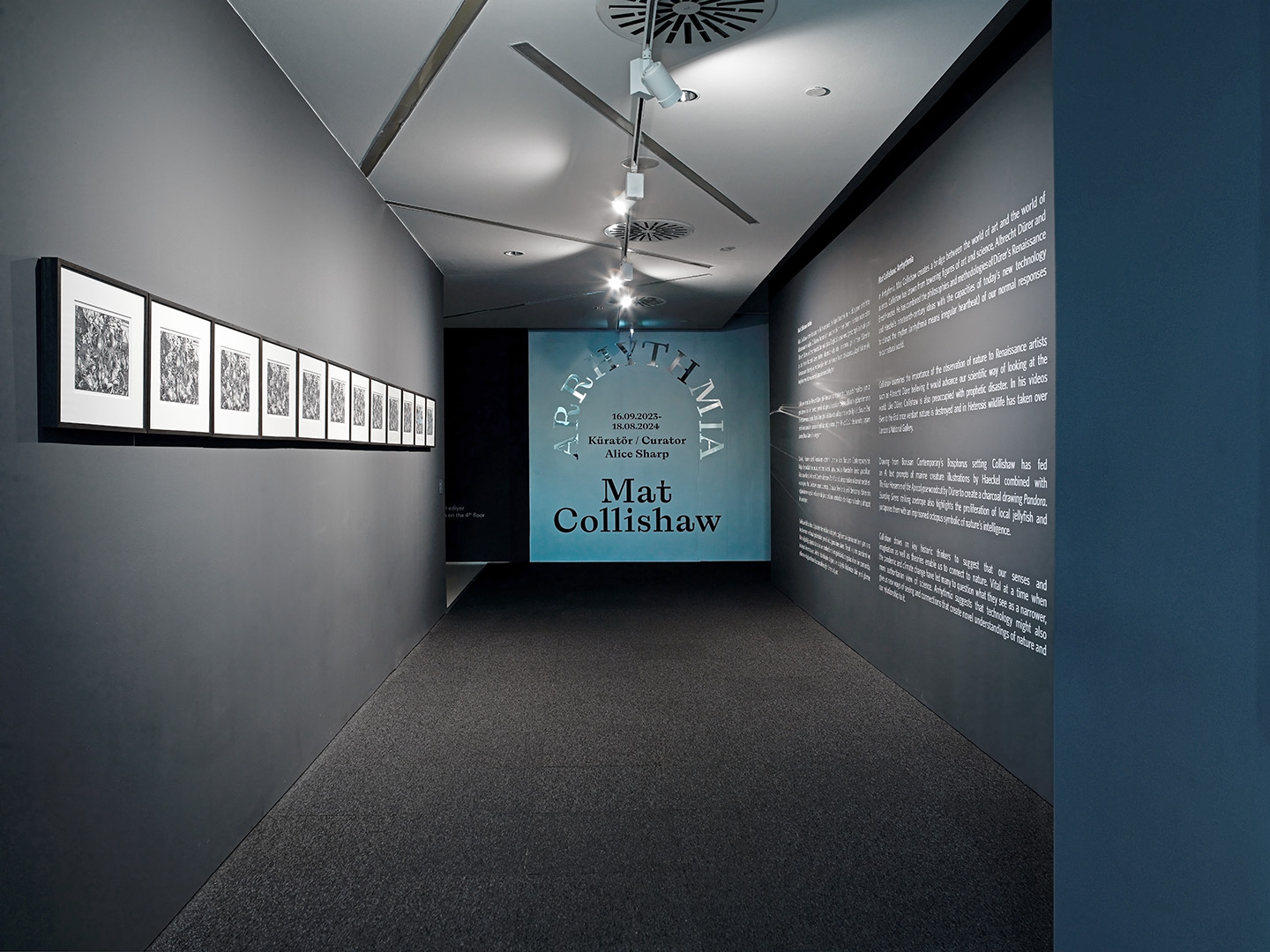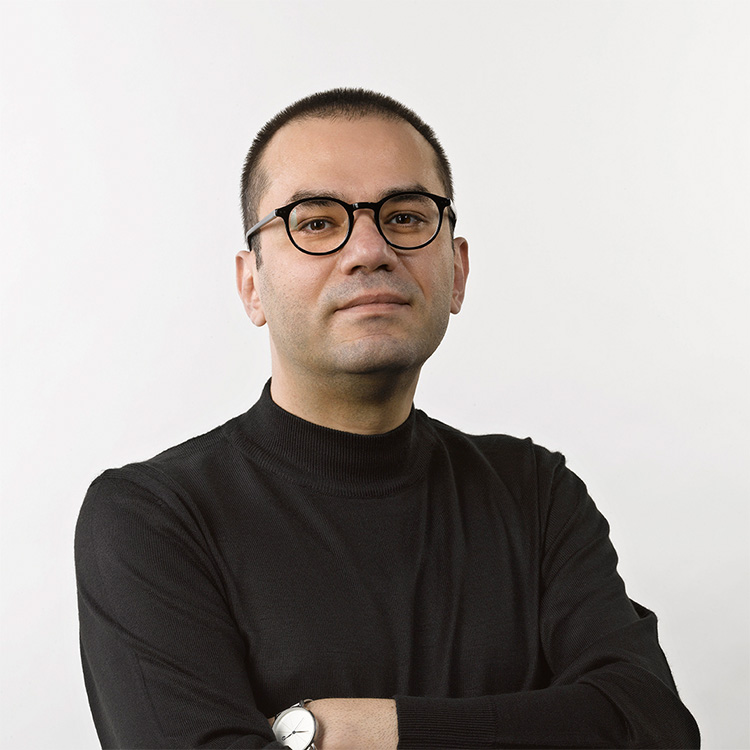Blog
An Interview With Alice Sharp On Climate Change And Contemporary Art
27 March 2024 Wed
İbrahim Cansızoğlu had an interview with Alice Sharp, curator of the exhibition "Mat Collishaw: Arrhythmia", about the reflections of climate change on contemporary art.
İbrahim Cansızoğlu: You are the founder of an organization working in the field of environmental issues, Invisible Dust. Why did you decide to focus your curatorial work in contemporary art on climate change awareness?
Alice Sharp: In 2008 I was invited as an independent curator by the British Council to take part in an international conference on art and climate change called “Tipping Point”; which took place in Berlin set up by Peter Gingold, Oxford University. At this incredible event, hundreds of artists and scientists from all across Europe took part in “Open Space” sessions and were addressed by the amazing climate scientist Hans Schellnhuber of the Potsdam Institute for Climate Research who advised President Clinton. Firstly, I realised the enormity of the climate challenge we face. But also, that I could bring artists and scientists like the ones I was meeting in Berlin together to create new ways of thinking. I set up Invisible Dust in 2009 to do just that. At Invisible Dust we seek through contemporary artworks and events to “make the invisible visible”, to enable people all over the world to understand more about climate change and enable them to connect to it on a personal level.
İC: In your mission statement for Invisible Dust, you highlight your organization's role in facilitating a dialogue between leading visual artists, creative technologists, and scientists. What were the main challenges you had to face so far in these processes of facilitation?
AS: It is vital for me that our programme is one where both artists and scientists collaborate, and the art is not seen as instrumental. I encourage the artists I work with to learn about the science but not to create something that is too literal. Art is effective in communicating complex ideas because it can tell stories or look beautiful and as human beings, we understand with our emotions as well as our brains. For the scientists, there is also a learning process, in coming to trust the artist, welcome surprises and to experience different ways of looking at things.
For the first ten years, there were challenges from the art world where I was told that working on climate was niche! Now climate has become mainstreamed in artists’ ideas and the works they create, and we are working much more internationally to involve artists internationally and bring our experience to new audiences.
So, there are challenges at every stage, but I love the way the new ideas develop. It's a very exciting process.

Mat Collishaw, “Even to the End”, 2023.
İC: Considering the consequences of climate change on the seas, issues like increases in non-native species, pollution, and overfishing have been a matter of interest for you not only in Arrhythmia but also in your previous projects. Would you like to talk about the way you integrate your curatorial work with academic research?
AS: Artists have, and always have had, throughout history an infinity with the sea. Our earliest stories in most cultures include stories about the sea. So, for each artwork, there is a variety of factors that enable us to decide which scientists to involve. The oceans are in crisis, from all the issues you mention, and we have worked in many different ways to look at our seas.
In Offshore: Artists Explore the Sea for example which was our exhibition for Hull UK City of Culture in 2017 we combined existing artists' works such as John Akomfrah and Tacita Dean which explore the sea’s “wildness” with new commissions on the Deep Sea by Mariele Neudecker working with marine biologists and on oil slicks by Saskia Olde Wolbers. In “For Now We See the See” 2018/19 we worked with two filmmakers Margaret Salmon and Ed Webb-Ingall and the Scottish Association of Marine Sciences to explore “Marine Protected Areas”. The programme explored how these sections of the ocean where you cannot fish for certain species and how they support biodiversity and prevent over-fishing but also how they are viewed from the fisherman’s perspective. We try to bring all sections of the community with us if we can.
Currently, I am developing new ideas together with oceanographers, space scientists, and marine biologists at Bergen University in Norway to look at how the Gulf Stream is being affected by climate change. The Gulf Stream affects a huge proportion of the earth’s weather systems. We will be bringing the scientists together with artists and I’m fascinated with how it will turn out.
İC: To what extent are new artistic explorations effective in increasing awareness about climate change and how do you evaluate the audience response to such projects?
AS: My experience is that artworks can really change people’s perspectives. I have worked with many artists on air pollution projects in London since 2009 for example and I can really see a big change in people’s thinking which has led to policies which have reduced air pollution and congestion.
The oceans are in crisis, from human effects including climate change itself. This warming of our seas has devastating effects on animals such as corals which are being bleached and destroyed. It is difficult for scientists to reach the public with these serious areas of their research that will affect us all. For example, scientists use ocean surface temperature as one of the main markers of how the climate is changing. How do they communicate that? For me, it is about the artworks creating new ideas for audiences inspiring imaginative thinking, and making a connection with people who may be living very far away from the seas to care for and love the ocean.

“Mat Collishaw: Arrhythmia”,
view from the exhibition, 2023
İC: How do you position the Mat Collishaw: Arrhythmia exhibition at Borusan Contemporary in your curatorial journey?
AS: I have become increasingly interested in the role of AI and climate change and really enjoy Mat’s really clever use of AI and robotics to explore our relationship with nature. It was a wonderful opportunity to work with one of the world’s best artists exploring climate change and the natural world in a way which looks at our history, the complexity of current catastrophic predictions. It has also been a joy to work with Borusan Contemporary’s great team! I have worked in Istanbul on and off since 2008 which I love and so I wanted to bring the local Istanbul context. We learnt about the problems of climate change and the urban pollution causing the algae blooms killing the fish and other animals and also Mat and I chatted to Muharrem Balcı a marine biologist at İstanbul University to understand the biological factors.
İC: How would you compare Collishaw’s approach to the climate crisis in his works to the approaches of other artists you have collaborated with so far? What makes Mat Collishaw’s works different regarding the discourse proposed on environmental issues?
AS: Mat is extremely adept at bringing in the historical art and science context to the way we see climate change now. I have been so excited by Mat’s ideas of focusing on Albert Durer and his etchings of the weeds and also the Four Horsemen of the Apocalypse which are brought together with Ernst Haeckel’s drawings of micro sea creatures. A really wonderful interweaving of the Renaissance and nineteenth-century thinking on nature. His new zoetrope and videos are incredible and so dramatic and Even to the End really draws on the emotions.
I think the way he has done this is very original. The best art asks questions, and the audience has to do the thinking to understand it. I think Arrhythmia does that. Our situation is complicated. What do we do about climate change? Is it going to be a catastrophe? What do our children think, being born into our mess? Are we prepared for it, and can we save ourselves? Mat’s work raises these vital questions.
İC: At the press conference of the Mat Collishaw: Arrhythmia you have raised discussions and questions related to Kantian thought. Do you think there is a return towards scientific thinking and the ideals of Enlightenment after the waning of the destructive intellectual climate of post-modernism? If so, why?
AS: Yes, in my view Kantian thought is important to understanding our natural world. Like Wolfgang Goethe and Alexander Von Humboldt who followed Kant and in fact most indigenous peoples around the world; I believe that everything in nature is interrelated, the weather, the nature, the natural systems, and we as human beings are part of this. As our governments ignore how climate change is affecting the way our weather is changing, the floods, the heatwaves, and the nature, we will want to ask questions of the policymakers and turn to the scientists to help us solve the problems. But it is vital to understand that those scientists are conducting their work from “their” own experience as Kant said and not in a vacuum, if we can work closely between art and science, we can create a new understanding that enables us to change and learn from scientific knowledge.
Postmodernism has come more recently to have a distinctly dystopian and defeatist flavour, and we certainly have a lot of that thinking about. I think the best art like Mat’s enables us to create value and respect for people of our natural world, it creates a strong sense of agency rather than merely anxiety about climate change. Turning to Kant gives us a better understanding of science as a liberatory and shared process of questioning rather than a narrow and authoritarian quest for certainty. For example, whilst in Bergen, Norway recently I learnt about the Gulf Stream warming the Arctic further, breaking up the ancient sea ice and I had Caspar David Friedrich’s The Sea of Ice, painting in my head. I would say that drawing from the ideals of the Enlightenment and the artists that followed them are essential for our future.
ABOUT THE WRITER
İbrahim Cansızoğlu
İbrahim Cansızoğlu, Istanbul based art writer and researcher.
He earned his undergraduate degree at Koç University Economics Department which he attended with full scholarship. He completed Sabancı University Visual Arts and Visual Communication Design Graduate Program with his MA thesis on aesthetics of moving image. At conferences organized by the University of Reading, the University of Hertfordshire and the University of Winchester, he presented his researches based on his thesis. He had a certificate from London Film Academy. He taught in film, visual theory, visual culture and contemporary art at Izmir University of Economics and Kadir Has University.
He worked at Galeri Nev Istanbul between 2012 -2015. He took on the task of curatorship in independent projects and in the context of Protocinema Emerging Curator Series in 2017. He continues to contribute art magazines Sanat Dünyamız and Art Unlimited with interviews and articles. He writes for the online art platform Argonotlar.




